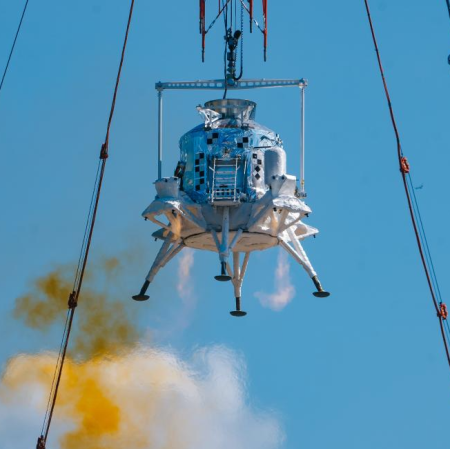New Hubble observations of Comet 3I/Atlas refine its size
Using the Hubble Space Telescope, astronomers have refined significantly the size of the interstellar object Comet 3I/Atlas as it zips through the solar system in its journey through the galaxy.
The image to the right, cropped and reduced to post here, is a Hubble image taken on July 21, 2025. The streaks are background stars.
Hubble’s observations allow astronomers to more accurately estimate the size of the comet’s solid, icy nucleus. The upper limit on the diameter of the nucleus is 3.5 miles (5.6 kilometers), though it could be as small as 1,000 feet (320 meters) across, researchers report. Though the Hubble images put tighter constraints on the size of the nucleus compared to previous ground-based estimates, the solid heart of the comet presently cannot be directly seen, even by Hubble.
…Hubble also captured a dust plume ejected from the Sun-warmed side of the comet, and the hint of a dust tail streaming away from the nucleus. Hubble’s data yields a dust-loss rate consistent with comets that are first detected around 300 million miles from the Sun. This behavior is much like the signature of previously seen Sun-bound comets originating within our solar system.
In other words, though this object comes from far outside our solar system, it so far appears to closely resemble comets from our own system. If confirmed, this fact is quite significant, as it suggests the formation of solar systems throughout the galaxy are likely to be relatively similar to our own.
Using the Hubble Space Telescope, astronomers have refined significantly the size of the interstellar object Comet 3I/Atlas as it zips through the solar system in its journey through the galaxy.
The image to the right, cropped and reduced to post here, is a Hubble image taken on July 21, 2025. The streaks are background stars.
Hubble’s observations allow astronomers to more accurately estimate the size of the comet’s solid, icy nucleus. The upper limit on the diameter of the nucleus is 3.5 miles (5.6 kilometers), though it could be as small as 1,000 feet (320 meters) across, researchers report. Though the Hubble images put tighter constraints on the size of the nucleus compared to previous ground-based estimates, the solid heart of the comet presently cannot be directly seen, even by Hubble.
…Hubble also captured a dust plume ejected from the Sun-warmed side of the comet, and the hint of a dust tail streaming away from the nucleus. Hubble’s data yields a dust-loss rate consistent with comets that are first detected around 300 million miles from the Sun. This behavior is much like the signature of previously seen Sun-bound comets originating within our solar system.
In other words, though this object comes from far outside our solar system, it so far appears to closely resemble comets from our own system. If confirmed, this fact is quite significant, as it suggests the formation of solar systems throughout the galaxy are likely to be relatively similar to our own.









